Generative AI and the march towards the democratization of IT
I have worked in IT for almost 30 years and I have experienced first-hand tectonic shifts in this industry. Some of them have been more profound and impacting than others.
Given my recent re-focus on Generative AI, I am going to go through my experience trying to imagine the implications of Gen AI and its potential impact with a focus on the IT democratization process we have appreciated in the last 3 decades. I will do so using the visual support of my famous MS Paint 1.0 style diagrams (which seem to amuse my Twitter friends).
If you will, this is a technology deep-dive follow up to this previous blog post I wrote a few months ago.
When I made my entrance in the IT circus (back in 1994) mainframes were still a thing. While I have never worked directly on those, IBM having been my first employer had me to "live with them" (whether I liked it or not - hint: I did not). It was elitist computing, available to only a small segment of people which required a relative high degree of specialization and proficiency. Costs were astronomic (which was one of the main reasons for the elitist status). While it worked for its purpose, this was the exact opposite of IT democracy.

The very first tectonic shift in the status quo that I have witnessed came with the advent of the PC (the Personal Computer). Professionally speaking this, along with IBM OS/2, was the platform that I started with. All of a sudden people had access to compute resources at a fraction of the cost (relative to the mainframe). This helped democratize access to these resources for basic tasks. This happened both for personal use and for business users. Many organizations that would only have access to expensive and non-dynamic mainframe proprietary environments would start migrating to cheaper x86 architectures (the technology at the core of the PC).
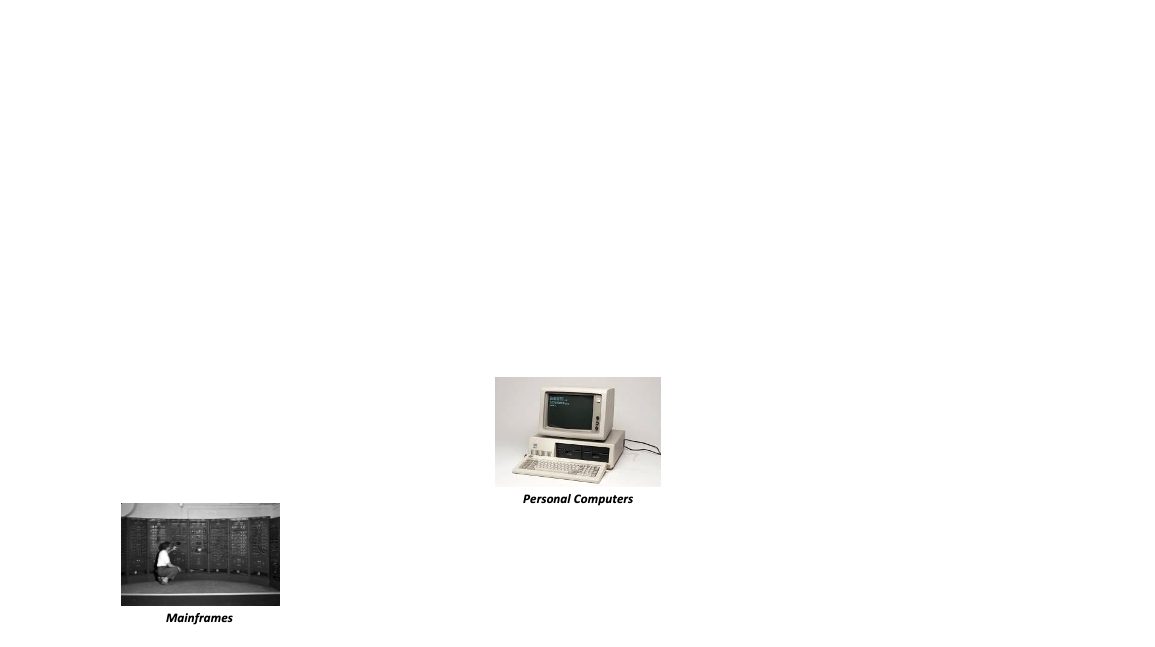
Acquisition costs plumbed, but the cost of managing and maintaining these infrastructures raised to the roof (relative to the mainframe). Over the years new technologies (such as hardware hypervisors) made their appearance to help with lowering the costs of ownership and increasing the efficiency.
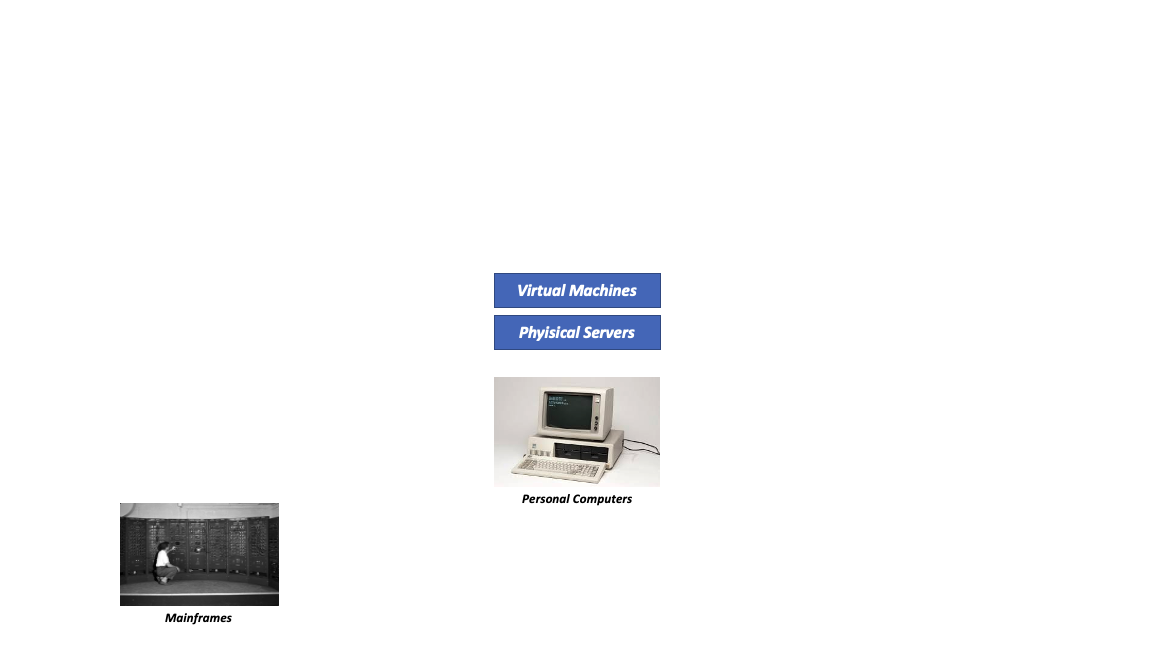
While starting to work on x86 virtualization was a defining moment for my career (I talk more about those anecdotes in this blog post), I don't think it was a "tectonic shift". Sure it was enough to put the last nail on the coffin of proprietary UNIX systems and creating software power houses (like VMware), but it was more of a platform operational optimization in my personal opinion. It was not even a move to democratize access to IT. It "just" made IT better.
This time around was when the next tectonic shift happened, and it did not have much to do with the technology per se as it had to do with the way technology was delivered: the cloud makes its appearance. The cloud offered a couple of key durable advantages that are true to date, will hold true for a long time to come, and that are unrelated to the technology at hand. The advantages are: 1) access to compute resources on-demand over the Internet that allows people to pay only for what it is used and 2) removing the undifferentiated heavy lifting of managing a large part of the IT stack (which was and still is becoming more complex every day). This was the next step in the march towards democratizing access to IT.
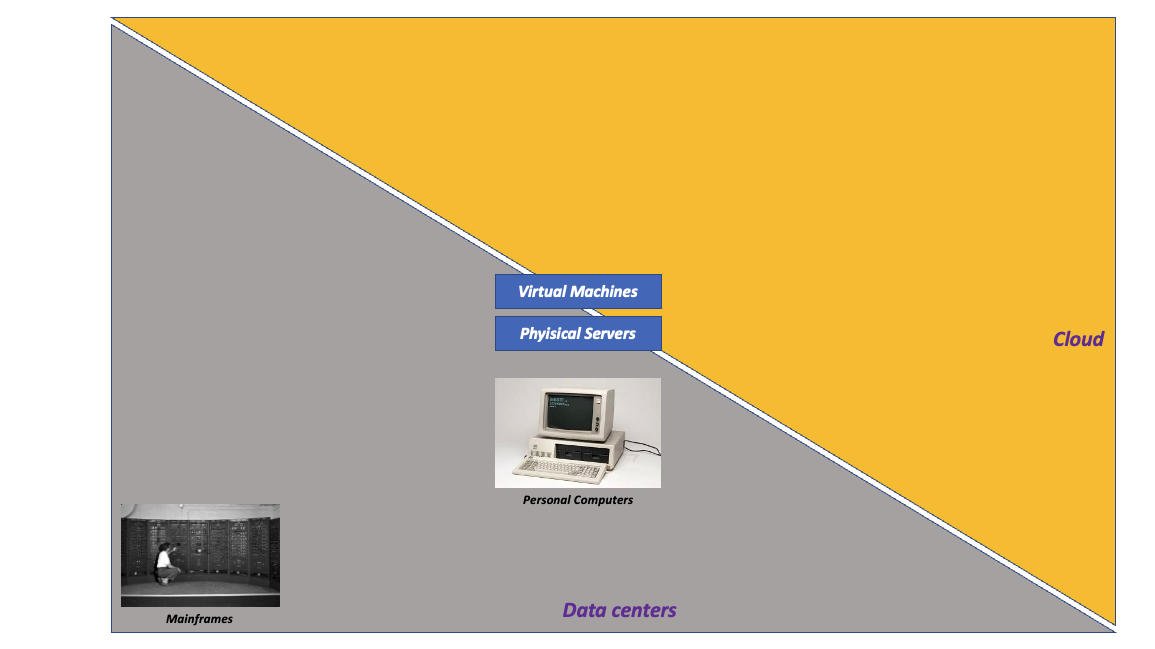
If you zoom out 30 years and watch these dynamics from above, albeit queuing (Amazon SQS) and data (Amazon S3) were the first cloud services made available, it's fair to say that the introduction of the "VM" technology form factor was the moment that caused the flip in the IT delivery mechanism (from a DIY data-center compute model to a cloud compute model). Over the years, the stack has been further optimized with the advent of containers and functions. These abstractions have helped massively with the software release cycle (containers specifically) and with the undifferentiated heavy lifting (functions specifically). While these abstractions could be run on-premise, the de-facto standard is that containerized workloads and functions based workloads typically run in the cloud. While there are many nuances, this is due to the fact that “the cloud is now the new normal” for many organizations and these form factors are the way customers deploy modern applications these days. There is also a high degree of infrastructure management burden that containers and functions have introduced, and it makes logical sense that you want to offload that burden (undifferentiated heavy lifting) to a cloud provider. This is state of the art as of mid 2023:
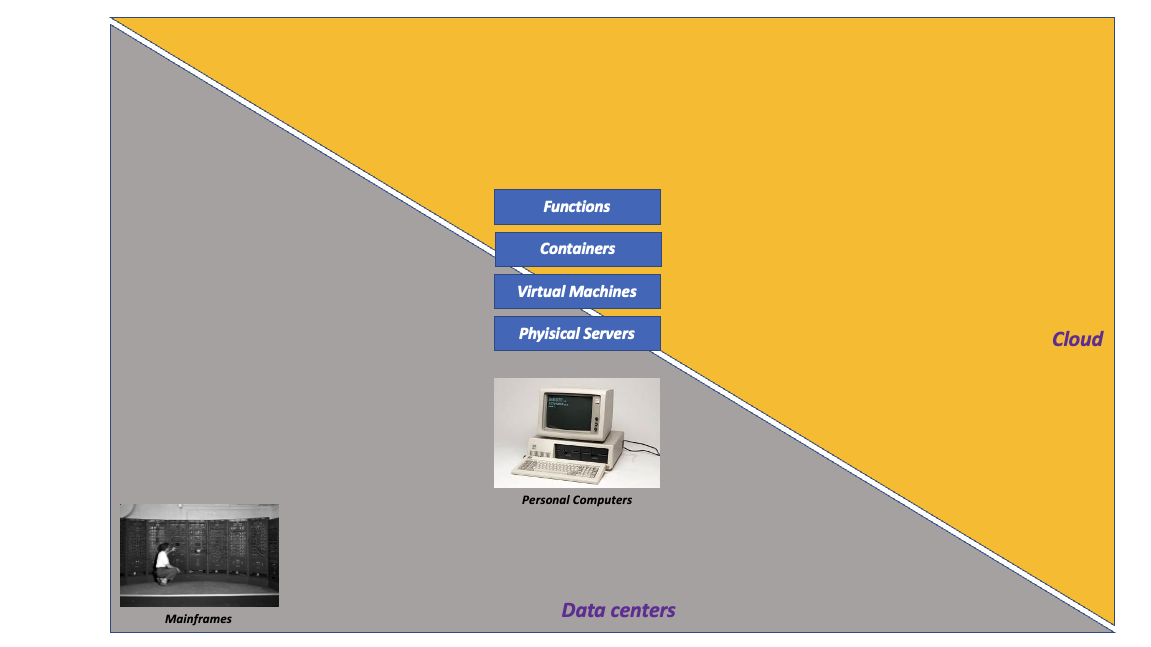
What's next?
Over the years, we have gone through a number of different gating factors that inhibit people to access technologies. At the beginning, with the mainframe, it was the acquisition costs of capacity and the need for a certain level of specialization. The PC removed the acquisition cost barrier to a certain extent but, as usage started to scale, it introduced a lot of inefficiencies and infrastructure complexity.
The cloud resolved some of these inefficiencies and infrastructure complexities but did not get rid of the need to be an expert in how you would use these technologies. This complexity has also been exacerbated through the years by the advancements in the number of cloud services and their capabilities. This has raised the bar for being able to use these technologies effectively. It's almost like IT people needed and wanted a Boeing 747, but they only knew how to fly a Cessna.
We spent the last decade or so at simplifying the consumption of the cloud and its capabilities solely based on the assumptions that not all users were IT experts and that not all customers had access to a dedicated IT expert that could help them. I think it's fair to say that, as an industry, we failed at this. We have created a bi-modal experience where a user must pick EITHER:
- simplicity (a Cessna) trading off capabilities and richness (a Boeing 747) OR
- capabilities and richness (a Boeing 747) trading off simplicity (a Cessna)
This is, in my opinion, what the third tectonic shift in the status quo is all about: Generative AI. Building further on my airplane parallel, this revolution isn't just as simple as adding an autopilot as we know it today to the Boeing 747. It's rather about equipping the Boeing 747 with a (virtual) pilot that you can leverage 24/7. Something that allows you to ask your Boeing things like "fly me to New York" and it will just do that for you.
Side note: I think it was brilliant from Microsoft to name parts of their Gen AI efforts "Copilot" but, in all fairness, they were not the first to have that branding intuition
I hear you chuckling, but we are indeed just scraping the surface of what Gen AI can do. I maintain that it will allow both the experts moving 10x faster and 10x more non-experts gaining access to IT in a way that they could not imagine with the interfaces we have today. This will range from coding assistant (something we are seeing today emerging) all the way to brand-new mechanisms to access and consume the cloud. This is going to be the next step in the march towards IT access democratization.
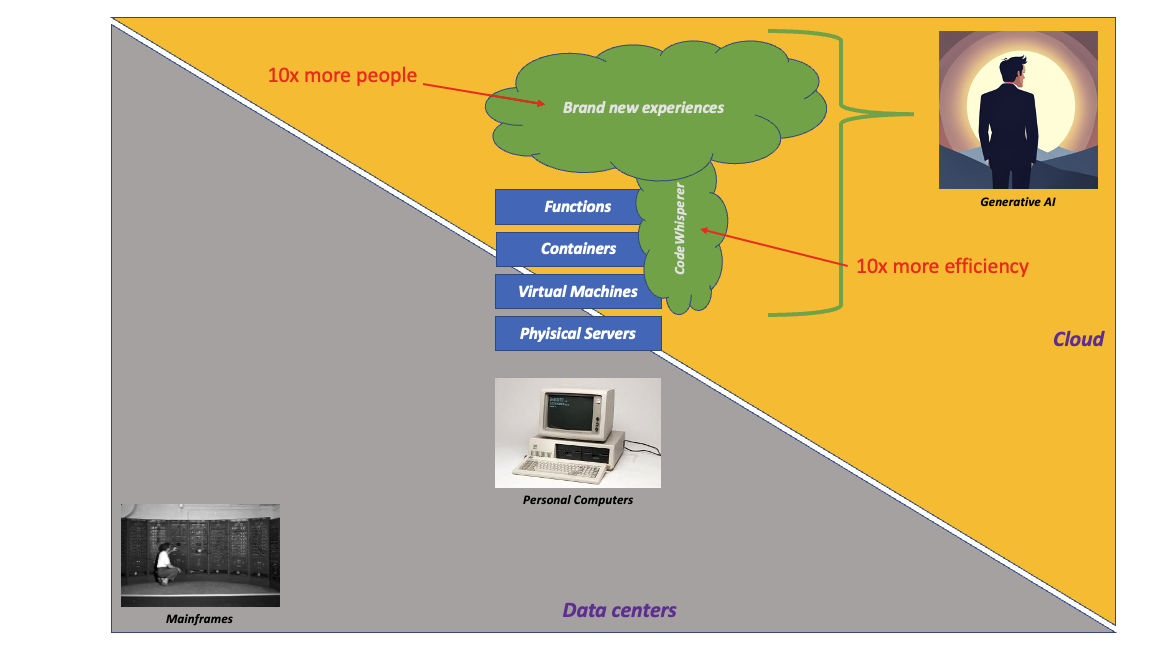
We are in the early days of Gen AI and I do believe that, the way we are thinking of it, is similar to how Bill Gates was trying to explain the Internet in 1995. Think about how the Internet was imagined in 1995 Vs. what the Internet did for you today. Who would have thought, right? I am trying to keep an open mind and don't be the David Letterman of this video.
As futuristic as these Gen AI statements we hear today sound in 2023, I still feel we are all playing Bill Gates describing the Internet in 1995.
Massimo.
Yes there has been a number of other tectonic shifts in the IT industry (the Internet is of course a good example) and some of those I have not even touched on (e.g. the advent of the smartphones and mobile in general). This post is building on my very personal professional experience, and it leads all the way to Generative AI. But Generative AI isn't just a progression for IT systems and the cloud. Gen AI will be a corner stone moment and will have an impact on other dimensions of the IT evolution. Almost as if all roads lead to
RomeGen AI.